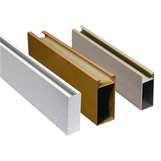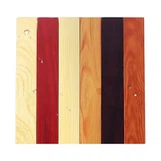What is the flatness tolerance of Aluminium Sheet?
Hey there! As an aluminium sheet supplier, I often get asked about the flatness tolerance of aluminium sheets. It's a crucial aspect that can significantly impact the performance and usability of these sheets in various applications. In this blog, I'll break down what flatness tolerance means, why it matters, and how it's determined for aluminium sheets.
First off, let's understand what flatness tolerance is. Simply put, flatness tolerance refers to the allowable deviation from a perfectly flat surface. No aluminium sheet is going to be absolutely flat; there will always be some minor variations. The flatness tolerance sets the boundaries within which these variations are considered acceptable.
Why does flatness tolerance matter? Well, in many industries, the flatness of an aluminium sheet can directly affect the quality of the final product. For example, in the automotive industry, aluminium sheets are used to make body panels. If the flatness tolerance is not met, the panels may not fit together properly, leading to gaps, misalignments, and ultimately, a less - than - perfect finish. In the construction industry, flat aluminium sheets are used for roofing and facades. Any significant deviation from flatness can cause water pooling on the roof or an uneven appearance of the building's exterior.
Now, how is the flatness tolerance of aluminium sheets determined? There are several factors at play here. One of the main factors is the manufacturing process. Aluminium sheets are typically produced through processes like rolling. During rolling, the metal is passed through a series of rollers to reduce its thickness and shape it into a sheet. The precision of the rolling equipment and the control of the rolling parameters can have a big impact on the flatness of the final product.
Another factor is the alloy composition of the aluminium. Different aluminium alloys have different mechanical properties, which can affect how they behave during manufacturing and how flat they can be made. For instance, some alloys may be more prone to warping or bending due to internal stresses within the metal.

Standards also play a vital role in determining flatness tolerance. There are international standards such as ASTM (American Society for Testing and Materials) and ISO (International Organization for Standardization) that specify the acceptable flatness tolerances for aluminium sheets. These standards take into account the different applications and requirements of the industry. For example, ASTM B209 is a standard that covers the flatness requirements for aluminium and aluminium - alloy sheet and plate.
Let's talk about how flatness tolerance is measured. There are a few common methods used in the industry. One of the most straightforward methods is the use of a straightedge. A straightedge is placed on the surface of the aluminium sheet, and the gap between the straightedge and the sheet is measured at various points. This gap represents the deviation from flatness. Another method is the use of laser scanners. Laser scanners can quickly and accurately measure the surface profile of the sheet, providing detailed information about its flatness.
When it comes to the specific values of flatness tolerance, they can vary widely depending on the application. For general - purpose aluminium sheets, the flatness tolerance might be relatively loose. However, for high - precision applications such as aerospace components, the tolerance can be extremely tight. For example, in some aerospace applications, the flatness tolerance may be specified as only a few thousandths of an inch over a large surface area.
As an aluminium sheet supplier, we understand the importance of meeting the right flatness tolerance for our customers. We have a quality control system in place to ensure that all our aluminium sheets meet the required standards. We use advanced manufacturing techniques and state - of - the - art measuring equipment to achieve the best possible flatness.
If you're in the market for aluminium sheets, it's essential to consider the flatness tolerance based on your specific needs. Whether you're using them for a small DIY project or a large - scale industrial application, the right flatness can make a big difference.
We offer a wide range of aluminium sheets, including Aluminum Plate Sheets 4x8. These sheets are available in different alloys and thicknesses, and we can ensure that they meet the appropriate flatness tolerance for your requirements.
If you're interested in learning more about our aluminium sheets or have specific questions about flatness tolerance, don't hesitate to reach out. We're here to help you find the perfect aluminium sheets for your project. Whether you're a small business owner, a contractor, or a DIY enthusiast, we've got the products and expertise to meet your needs. Contact us today to start the conversation and get the best aluminium sheets for your next project.
References
- ASTM International. ASTM B209 - Standard Specification for Aluminum and Aluminum - Alloy Sheet and Plate.
- ISO International Standards. Relevant standards for flatness of aluminium products.




